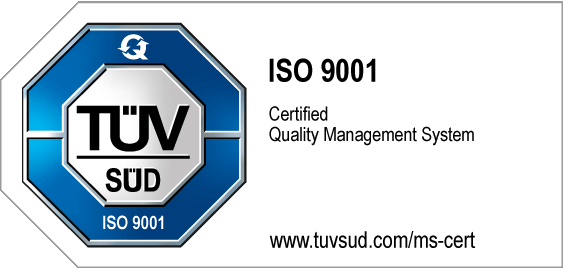Forecasting: Predictive Business Management
Forecasting helps companies to identify future developments at an early stage and make informed decisions based on this knowledge. By systematically analyzing data, risks can be minimized, opportunities better exploited, and operational processes optimized. Thus, forecasting becomes an indispensable tool for both strategic and operational business planning.
Forecasting – At a Glace
| Forecasting methods provide decision-making foundations: | Forecasting methods offer a structured basis for anticipating future developments. They support decision-making by reducing uncertainty and enabling proactive planning. |
| Data is the basis of every forecast: | Data is the foundation of every forecast, providing the empirical evidence needed to identify patterns and trends. Without reliable data, forecasting becomes speculative and loses its predictive power. |
| Forecasts improve decision-making: | Forecasts enhance decision-making by providing insights into potential future scenarios, allowing for more informed choices. By anticipating outcomes, they help organizations prepare and respond effectively to changing conditions. |
| Customer behavior can be analyzed in a targeted manner: | Using qualitative approaches such as market research or the Delphi technique, forecasts can be made regarding demand, product acceptance, and buying behavior. |
| Forecasting supports financial projections and resource planning: | Whether it’s revenue development, liquidity, or workforce planning – forecasts provide key metrics for realistic, forward-looking business management. |
What Is Forecasting?
Forecasting is the process of estimating future events or trends based on the analysis of past and current data. It plays a key role in helping organizations anticipate changes, reduce uncertainty, and make better strategic and operational decisions. By examining historical data and incorporating new data as it becomes available, forecasting allows businesses to stay agile and responsive. The goal is to create realistic projections that support planning in areas such as sales, budgeting, inventory, and staffing.
Forecasting can be applied across various industries, from finance and retail to healthcare and manufacturing. The accuracy of a forecast depends on the quality of the input data, the choice of method, and how well the model adapts to changing conditions. Forecasting data is continuously evaluated to improve the reliability of predictions. Advanced techniques like machine learning and AI are increasingly used to enhance forecasting performance by identifying complex patterns in large datasets. Ultimately, effective forecasting gives companies a competitive edge by helping them prepare for the future with greater confidence.
The quality of forecasts depends on the data used, the chosen methods, and how well models adapt to changing conditions. Techniques like operations research can be applied to optimize resource allocation, demand forecasting, and supply chain management. As new data becomes available, forecasts are refined, improving their accuracy.
What Are Time Series?
Time series are a sequence of data points collected or recorded at consistent intervals over time. They are commonly used in forecasting to analyze patterns such as trends, seasonality, and cyclic behavior. By examining the past behavior of a time series, one can predict future values, making it a key tool in fields like economics, finance, and supply chain management. Time series data can be univariate, involving a single variable, or multivariate, where multiple variables are analyzed simultaneously.
The analysis of time series allows for the identification of underlying structures, which are then used to generate forecasts. Methods such as moving averages, exponential smoothing, and autoregressive models are frequently applied to time series data for forecasting. In the context of forecasting, time series is essential because it provides the historical context necessary to predict future outcomes with greater accuracy.
How Does Forecasting Work?
Forecasting works by using historical data to predict future events or trends. The process typically begins with data collection, where past performance or behavior is gathered over a defined period. Once the data is obtained, it is analyzed to identify patterns, trends, seasonality, and irregularities. Statistical methods and models, such as regression analysis, time series models, or machine learning algorithms, are then applied to the data to make predictions about future outcomes.
The choice of method depends on the nature of the data and the forecasting objective. After the forecast model is built, it generates predictions, which are then validated by comparing them against actual outcomes. Forecasters adjust their models based on this feedback, refining their predictions over time. The accuracy of forecasts can be influenced by the quality of the data, the selection of the right model, and external factors not included in the analysis.
While forecasting cannot guarantee certainty, it provides a structured approach to anticipating future developments. In business, forecasting helps in making decisions related to inventory management, financial planning, staffing, and other critical areas.
What Are the Goals of Forecasting?
The main goal of forecasting is to support better decision-making by predicting future developments based on historical data. Accurate forecasts help businesses plan resources, budgets, and strategies more effectively. Improving forecasting accuracy reduces uncertainty and allows companies to respond quickly to changes in the market. Practical forecasting tools, such as software and statistical models, make it easier to generate reliable predictions. By combining these tools with high-quality historical data, organizations can gain valuable insights and increase their competitiveness.
By analyzing past and current information, companies can derive targeted actions to actively steer business development and detect risks early. The five key goals are:
- Create a sound basis for decision-making:
Forecasting enables data-driven decisions at strategic and operational levels, replacing gut feeling with reliable estimates. - Identify deviations early:
Ongoing forecasts help detect deviations from plans – in production or logistics, for example – and initiate corrective measures. - Reduce costs and use resources efficiently:
Forecasts help to strategically allocate personnel, materials, and capital, avoiding unnecessary expenses. - Minimize risks and expand room for action:
Potential risks such as market changes or supply shortages can be identified early, enabling faster and more targeted responses. - Manage long-term business development:
Long-term forecasts support strategic direction and investment decisions in new markets, products, or technologies.
Overview of Forecasting Methods
Forecasting methods are tools used to predict future events based on historical data and current trends. These forecasting techniques can be broadly categorized into quantitative and qualitative approaches. Quantitative forecasting methods rely on numerical data and statistical models, such as time series analysis or regression. In contrast, qualitative forecasting techniques use expert opinions, market research, and experience-based judgment, especially when data is limited. Choosing the right combination of forecasting methods helps businesses improve accuracy and make well-informed decisions.
Various methods are relevant for forecasting the future, but two main categories are especially important: quantitative and qualitative methods.
Quantitative Methods
Quantitative forecasting relies on numbers, data, and measurable facts to predict future developments in a company or market. It draws on past business data, particularly sales figures, seasonal fluctuations, and demand trends.
Statistical models and mathematical techniques – such as time series analysis or moving averages – are used to make precise forecasts.
The more extensive and reliable the data, the more accurate the results. This method is especially useful for companies with well-documented histories. Start-ups or young companies with limited data often face challenges here.
Typical quantitative methods include:
- Naive Forecasting:
The last known value is simply carried forward. Simple, but often imprecise.
- Moving Averages:
Averages of several past periods are calculated to smooth out short-term fluctuations.
- Exponential Smoothing:
More recent data is weighted more heavily than older data, ideal for short-term forecasts in volatile markets.
- Seasonal Indices:
Useful for companies with seasonal cycles (e.g., tourism or retail) to adjust forecasts based on the time of year.
Modern approaches combine traditional statistics with AI and machine learning to make forecasting models even more efficient and dynamic.
Qualitative Methods
In contrast to quantitative methods, qualitative methods relies on subjective expert assessments rather than large datasets. Market demand is estimated using knowledge and experience. Companies can engage both internal and external experts.
This method is especially useful when little to no historical data is available – such as when launching new products, entering unfamiliar markets, or during exceptional events that cannot be derived from past data.
A special form of qualitative forecasting is demand forecasting, which predicts how sales promotions will influence customer demand and buying behavior.
Typical qualitative forecasting approaches:
Delphi Method: A multi-stage, anonymous questionnaire process conducted among experts. In several rounds, experts give their views on a specific question. After each round, responses are summarized and shared with participants. The goal is to reach a consensus on future developments, such as market potential or sales forecasts.
Market Research: Companies conduct customer surveys, focus groups, or interviews to understand the target audience. Insights into buying intent, product acceptance, or brand perception are then used in future projections – especially useful for new products or marketing initiatives.
Expert Panels and Executive Workshops: Internal and external experts (e.g., from sales, marketing, or product management) contribute their knowledge of market changes, competitors, or customer behavior. Structured discussions and rating scales lead to forecasts based on sound experience.
Advantages of Qualitative Methods:
- Useful when data is lacking:
Ideal for innovation projects, market entries, or crisis situations with little historical data.
- Flexibility:
Can account for unusual events or external influences like political changes, natural disasters, or social trends.
- Expertise-based:
Judgments are made by individuals with deep market or product knowledge, which quantitative models may not fully capture.
Limitations and Challenges:
- Subjectivity:
Forecasts rely heavily on participants’ judgment. Personal biases or prior experiences may skew results.
- Limited reproducibility:
Because forecasts are not based on fixed numbers, they are less transparent and harder to standardize.
- Short-term bias:
Recent events or trends may be overemphasized, while long-term developments are overlooked.
Frequently asked questions and answers
Forecasting is the process of predicting future developments based on the analysis of historical data and current trends. It helps businesses make informed decisions by anticipating potential risks and opportunities. By using statistical models or expert insights, forecasting supports strategic planning and operational efficiency.
An example of forecasting is predicting next month’s sales based on historical sales data and seasonal trends. A company might use time series analysis to estimate future demand for a product. This helps ensure that inventory levels, staffing, and marketing efforts are aligned with expected customer needs.
Demand forecasting is the process of estimating future customer demand for a product or service. It helps businesses plan production, inventory, and supply chain activities more effectively. By analyzing past sales data, market trends, and consumer behavior, companies can better align their resources with expected demand.
Forecasting in business is the practice of predicting future outcomes to support strategic and operational decision-making. It involves analyzing historical data, market trends, and other relevant factors to estimate future performance, such as sales, revenue, or resource needs. This enables businesses to reduce risks, seize opportunities, and plan more effectively for the future.
Sources
- Organisation für wirtschaftliche Zusammenarbeit und Entwicklung (OECD, englisch: Organisation for Economic Co-operation and Development). Glossary of statistical terms. Forecasting.
https://stats.oecd.org/glossary/detail.asp?ID=3652


